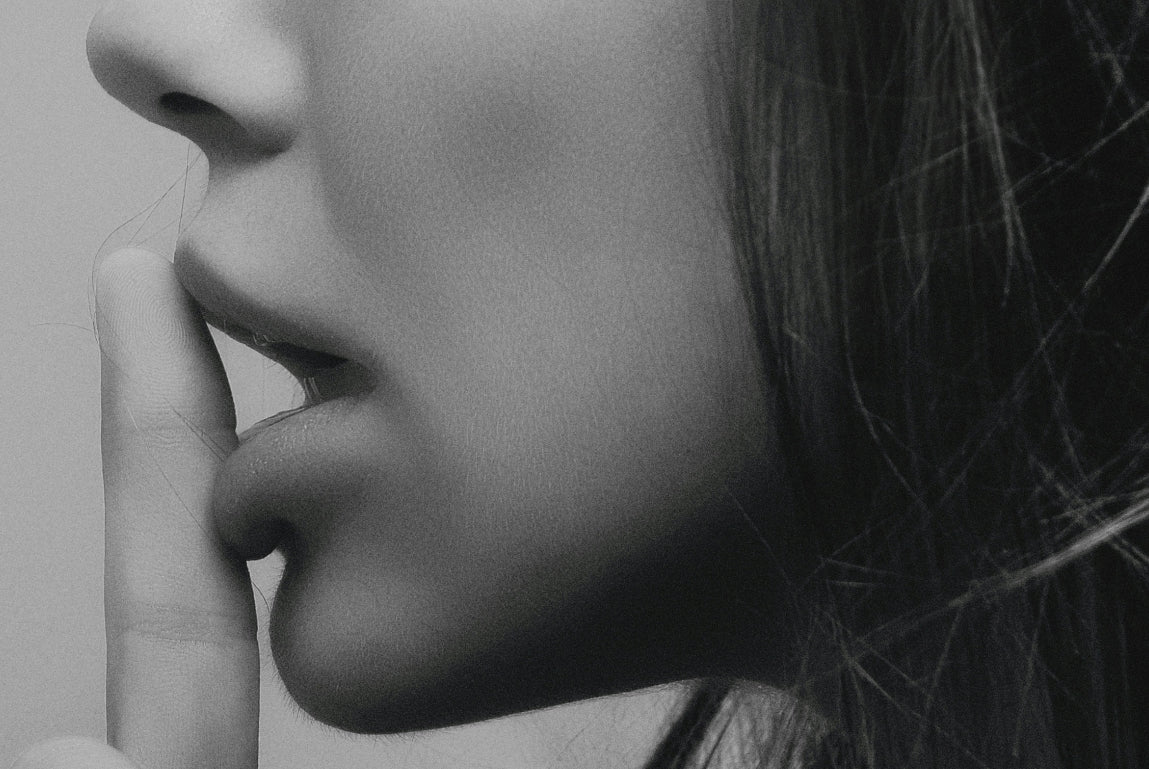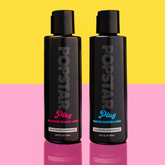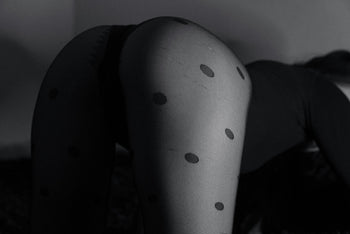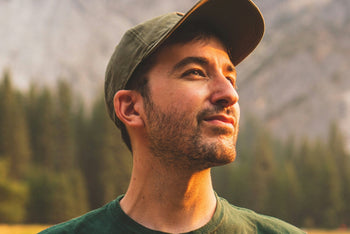

TABLE OF CONTENTS
Key Takeaways
Sex stories have shaped culture and desire since cave painting days—yes, really.
Erotic storytelling blends fantasy with psychology, sparking arousal in ways no visual can.
Censorship has only made erotic fiction more irresistible across time.
Today’s erotica spans audio apps, fan fiction, and even AI-generated fantasies.
Inclusive, ethical, consent-forward erotica is the new standard for turning pages and partners on.
Why Words Still Make Us Moan
Long before high-definition video, incognito browsers, and discreet subscription services, desire was inked into scrolls, whispered across temples, and scratched into stone by torchlight. Sex stories —yes, the kind that make you squirm in your seat and consider reading with one hand—have always been more than titillation. They're rituals of imagination, acts of rebellion, emotional spelunking, and sometimes, very awkward translations of metaphor.
Whether chanted in sacred ceremonies or devoured in the privacy of modern e-readers, erotic storytelling has remained humanity’s most enduring form of foreplay. So let’s slide into something a little more historical and take a voyeuristic tour through the sweaty corridors of sensual literature.
1. From Cave Smut to Clay Tablets: Our Prehistoric Pornhub
Before Shakespeare, before Shakespeare fan-fiction, and definitely before AI erotica, humans were already drawing boobs on walls.
The earliest known “literary” erotica? Paleolithic cave art. Think: exaggerated vulvas, bulbous phalluses, and fertility goddesses who make Barbie look subtle. Around 2100 BCE, the Sumerians took it up a notch by inscribing odes to Inanna—the goddess of love and war—on clay tablets. These weren't subtle. They made today's sexts sound bashful.
This early erotic storytelling was deeply spiritual. Sex wasn’t just recreation—it was a conduit to divine energy. The Kama Sutra and Chinese texts like the Su Nu Jing weren’t so much dirty books as cosmic instruction manuals. In ancient India and China, pleasure was philosophy, and a good lay could literally bring balance to the universe. Namaste, indeed.
2. Greco-Roman Orgies and Arabian Nights That Slap
The Greeks basically invented literary erotica as performance art. You’ve got Sappho with her sensual longing, Aristophanes cracking dick jokes in amphitheaters, and vases that basically double as OnlyFans.
Rome took the baton (and a few liberties). Ovid’s Ars Amatoria served as a guide to seduction, while satirists like Juvenal documented society’s libido with zero chill.
Meanwhile, Scheherazade spun tales in One Thousand and One Nights that weren’t just about flying carpets. She smuggled erotic fiction past the morality police by wrapping it in parables. This clever delivery system helped fan fiction erotica thrive centuries before Tumblr existed.
3. Printing Press = Porn Press (You’re Welcome, Gutenberg)
With printing came pulp. Boccaccio’s Decameron and Aretino’s Sonetti Lussuriosi made it into the hands (and laps) of the masses. These weren’t subtle, either. Aretino’s stuff got banned by the Pope—which, let’s be honest, only made people want to read it more.
France and England went full libertine. The Marquis de Sade gave us taboo (and torture). Aphra Behn, one of the first published female playwrights, gave us sharp-witted heroines who actually enjoyed sex. Fanny Hill arrived in 1748 and was promptly banned—because apparently, a woman enjoying herself was more dangerous than cholera.
4. The Victorian Era: Sex Under the Corset
Ah, Victorian England: where people fainted over table legs but secretly passed around copies of My Secret Life and The Pearl. In the U.S., the Comstock Act banned “obscene” materials, but the people were horny and resourceful. Enter hollow-spined books, password-protected clubs, and gentlemen’s reading nights that involved very little reading and a whole lot of… shall we say, plot discussion.
Ironically, this repression only intensified the craving. The more taboo sex stories became, the hotter they got. Enter the era of banned books erotica —the original forbidden fruit.
5. Pulp, Paris, and the Big Sexual Bang of the 20th Century
The 20th century brought pulp paperbacks, Parisian expatriates, and the kind of lawsuits that doubled as marketing campaigns.
Anaïs Nin and Henry Miller gave us erotic fiction that was introspective, tortured, and frankly, kind of hot in a “chain-smoking at 3 a.m.” way. Meanwhile, pulp erotica sold fantasies for 25 cents at corner stores. Queer readers found themselves in the margins, literally. Lesbian pulp and bondage fiction became coded lifelines for those craving representation.
The feminist movement splintered—some decried porn, others reclaimed it. Story of O lit a thousand fires (and a few safe words). Black and queer anthologies expanded the genre into something truly inclusive. This was when inclusive erotic writing began to thrive—proof that desire doesn’t come in one shape, size, or orientation.
6. Digital Desire: From Fan Fic to Vibrator-Compatible Narratives
Then came the internet. Oh boy.
The 1990s gave rise to newsgroups like alt.sex and entire archives of fan fiction erotica —including slash pairings that gave Spock and Kirk a very close relationship. These weren’t side plots. They were revolutions. Harry Potter fanfic? Don’t even ask unless you’ve got a safe word.
By the 2010s, indie authors were self-publishing erotic fiction straight onto Kindle. Fifty Shades of Grey started as Twilight fan-fic and ended as a billion-dollar bondage buffet.
Now, apps like Dipsea, Quinn, and Ferly bring audio erotica into your AirPods. If you’ve never folded laundry while listening to a sultry narrator say “he pinned me against the doorframe,” are you even multitasking?
Meanwhile, interactive erotica lets you choose the storyline, character gender, and how spicy you want things to get. Swipe right on consent-forward kink. Choose-your-own-adventure, but make it horny.
Why Our Brains Crave Sex Stories More Than Porn
There’s science behind why sex stories hit different:
Imagination > Simulation : Reading engages the brain’s default mode network, turning your fantasy into a co-directed production.
Safe Kink Exploration : Want to play with power dynamics without real-world risk? Erotica is your safe word.
Emotional Foreplay : Neuroscientists say narrative tension and sexual arousal activate the same dopamine pathways. Cliffhanger = clit-hanger.
Empathy and Arousal : We project ourselves into the story. Especially for marginalized folks, it’s a rare chance to see your desire centered.
Language Lights Up Touch Centers : Studies show that sensual language lights up the same brain regions as actual physical touch. Yup—words are foreplay.
The neuroaesthetics of desire is real, folks. Brains like stories. Bodies like arousal. Together, they throw the best parties.
The Long Battle Between Erotica and Censorship
From book burnings to TikTok bans, the war against sexual storytelling continues. But spoiler alert: censorship never wins.
Why? Because repression sells. Banning a book is the best marketing it can get. Erotica has always adapted—through innuendo, metaphor, pseudonyms, underground presses, and now hashtags.
Meanwhile, the psychology of arousal proves we don’t need visual nudity to get turned on. A well-placed ellipsis can do more than a thousand naked selfies. And while erotica outsells most mainstream fiction, it still gets treated like the weird cousin no one talks about. Joke’s on them—it pays the bills and makes people happy.
The Ethics of Writing Good, Hot, Smart Sex
So how do we write sex that doesn’t suck (figuratively, that is)?
Consent is sexy : Enthusiastic, explicit, negotiated consent should be the baseline.
Complex characters are hotter : Give us stakes outside the bedroom.
Gender-inclusive language : Not everyone has the same parts. Let's write like it.
Aftercare in erotica matters : Especially with consensual kink stories , showing what happens after the climax shows you care about more than the money shot.
Trigger transparency : Content notes show respect. They don’t ruin the fantasy—they make it more accessible.
The Future: AI, VR, and Endless Sex Playlists
Welcome to AI erotica : where you can plug in your kinks, choose your genres, and have a robot draft your ideal bedtime story. Add VR headsets and customizable sex scenes, and suddenly you’re the protagonist of your own interactive fantasy.
But let’s not forget: the hottest erotica still comes from lived experience. The sass, the specificity, the inside jokes, the knowing glances—all the little details that no bot can quite replicate. That’s where literary erotica remains queen.
Think of the future as one big, customizable orgy of formats. You can read it, listen to it, touch it, live it. But at the heart of it? Words.
The Pulse Between the Pages
From prehistoric carvings to haptic-enabled story apps, sex stories have stayed with us because they do something no camera ever can—they make us imagine, ache, remember, and hope.
They show us what turns us on and what we’re brave enough to admit. They whisper, “You’re not alone,” when the rest of the world says, “You shouldn’t think that.” They connect us to centuries of lust, love, rebellion, and storytelling.
And let’s be real: they’re sexy as hell.
Frequently Asked Questions
What are sex stories, really?
They're fictional or semi-fictional narratives that center around erotic themes, often designed to arouse, entertain, or explore sexuality.
How is erotic storytelling different from porn?
Erotic stories rely on imagination and language. They’re often more emotionally and psychologically nuanced than visual porn.
Is it normal to prefer reading over watching?
Totally. Many people find that reading allows them to control the pace and imagery, making the experience more intimate and customized.
What’s the deal with audio erotica?
It’s like a bedtime story for adults—with benefits. Narrated fantasies let you close your eyes and enjoy the ride.
Can reading erotica help my sex life?
Absolutely. It can spark communication, expand fantasies, boost libido, and even improve confidence in bed.
What are sex stories?
Sex stories are written or spoken narratives that depict sexual scenarios, fantasies, or intimate experiences. Unlike pornography that relies on images or video, sex stories use descriptive language and imagination to evoke arousal or curiosity. Some sex stories are fictional, crafted by writers exploring creative fantasies, while others are based on real experiences shared by individuals.
How are erotic stories different from sex stories?
While the terms “sex stories” and “erotic stories” are often used interchangeably, there are subtle differences:
Sex stories often emphasize explicit sexual acts and physical descriptions
Erotic stories tend to focus on sensuality, emotions, and the build-up of intimacy in addition to sexual activity
Both genres overlap, but erotic stories are generally considered broader, blending romance, fantasy, and psychological tension with sexual content.
Why do people read sex stories?
People turn to sex stories for many reasons:
Arousal – Reading detailed erotic stories can stimulate sexual desire
Exploration – Stories allow readers to safely explore fantasies without acting them out
Education – Some sex stories serve as informal guides, offering insights into sexual practices or dynamics
Connection – Couples may read erotic stories together to spark intimacy and conversation
Are sex stories healthy?
Yes, consuming erotic stories in moderation can be healthy. Psychologists note that reading erotic literature can:
Reduce stress by providing pleasurable mental escape
Strengthen sexual communication in relationships
Enhance self-awareness of personal desires and fantasies
As long as the content is ethical and consensual, sex stories can be part of a balanced approach to sexuality.
Are sex stories only for men?
No. Research shows that women are significant consumers of erotic stories. In fact, many popular erotic novels and online platforms have female-majority readerships. Unlike stereotypical pornography consumption patterns, erotic stories often resonate with women because of their emphasis on character development, emotional build-up, and psychological intimacy.
What is the history of erotic stories?
Erotic storytelling has deep historical roots:
Ancient Greece and Rome – Erotic poetry and plays celebrated sensual pleasure
India – The Kama Sutra and related texts included narrative passages
Japan – Shunga art and erotic literature flourished in the Edo period
Arab world – The Thousand and One Nights included sensual tales
Europe – From Decameron to the Marquis de Sade, erotic stories challenged social norms
The internet has amplified access, making sex stories globally available in countless languages and formats.
Where can people find sex stories online?
Sex stories and erotic stories can be found on:
Dedicated erotic literature websites
Online forums and communities
Self-publishing platforms like Amazon Kindle
Erotic fanfiction archives
Mainstream romance or adult novel publishers
Always ensure that the site prioritizes consent, ethical writing, and age-appropriate access.
Are sex stories considered pornography?
Sex stories fall under the broader umbrella of erotic media, but they differ from pornography in important ways:
Literary focus – Erotic stories rely on imagination, not visuals
Reader-driven – Readers interpret and visualize scenarios themselves
Cultural acceptance – Erotic novels like Fifty Shades of Grey often achieve mainstream popularity where explicit pornography does not
Some classify sex stories as “literary pornography,” while others see them as a distinct genre of erotic art.
How do erotic stories affect relationships?
Couples who share or write erotic stories together often report:
Increased openness in discussing fantasies
Enhanced sexual intimacy
Reduced stigma around exploring desires
Stronger trust through vulnerability
However, balance matters. If one partner consumes sex stories excessively while neglecting intimacy with the other, tension may arise. Communication is key.
What types of sex stories are most popular?
Trends vary by culture and platform, but popular categories include:
Romantic erotic stories
Fantasy and role-play stories
BDSM and power-exchange narratives
Lesbian, gay, bisexual, and queer erotic stories
Real-life confessional sex stories
The diversity of erotic literature allows nearly every reader to find a niche that resonates with their desires or curiosities.
Are erotic stories suitable for beginners exploring sexuality?
Yes. For many people, reading sex stories is a safer, less intimidating entry point into exploring sexuality than watching pornography or engaging in sexual activity. Beginners can:
Read at their own pace
Stop at any point without pressure
Choose storylines that align with their comfort level
What are ethical concerns around sex stories?
Responsible consumption of erotic stories involves:
Ensuring all depicted scenarios emphasize consent
Avoiding exploitative or illegal content
Respecting authors’ rights and paying for published works when possible
Recognizing the difference between fantasy and real-life expectations
How do sex stories impact imagination?
Erotic stories engage the brain in ways that visual pornography cannot. Studies show that reading stimulates imagination, emotional empathy, and memory recall. When applied to sex stories, this mental involvement often creates deeper arousal than passive viewing.
Can sex stories be educational?
Yes. While not a substitute for formal sex education, erotic stories can:
Introduce readers to diverse sexual practices
Normalize discussions around intimacy
Offer perspectives on consent and communication
Inspire couples to try new experiences safely
Are there risks to reading sex stories?
Possible downsides include:
Developing unrealistic expectations about sex
Excessive reliance on erotic stories for arousal
Encountering content that doesn’t align with personal values
As with all forms of adult entertainment, moderation and mindful selection are important.
How do people write erotic stories?
Writing sex stories requires creativity, consent awareness, and sensitivity:
Develop realistic characters
Build emotional or narrative tension before intimacy
Use sensory language (touch, sound, sight, emotion)
Keep consent central
Balance explicitness with storytelling
Many platforms allow new writers to share erotic stories and receive feedback.
What is the difference between romantic fiction and erotic fiction?
Romantic fiction centers primarily on emotional bonds, often with implied or minimal sexual content.
Erotic fiction focuses on sexual exploration and may treat romance as secondary.
Both may overlap, but sex stories generally emphasize physical intimacy more directly.
How do cultural attitudes shape erotic stories?
Cultural background influences how sex stories are written, shared, and perceived. For example:
In conservative societies, erotic stories may remain underground
In liberal cultures, erotic literature is openly celebrated
Some regions emphasize romance and subtlety, while others are more explicit
This diversity ensures erotic stories reflect not just sexual desire but also cultural identity.
What role does technology play in sex stories today?
Technology has transformed erotic storytelling:
E-readers and mobile apps make discreet access easy
AI tools help writers generate story prompts
Online communities allow collaborative storytelling
Audio sex stories and podcasts create immersive experiences
This evolution has made sex stories more accessible and customizable than ever.
What is the future of sex stories?
Experts predict continued growth in erotic literature due to:
Rising demand for inclusive and diverse representation
Increased acceptance of sex positivity
Expansion into immersive formats like VR and AI narration
Blending of erotic stories with self-help and relationship guidance











